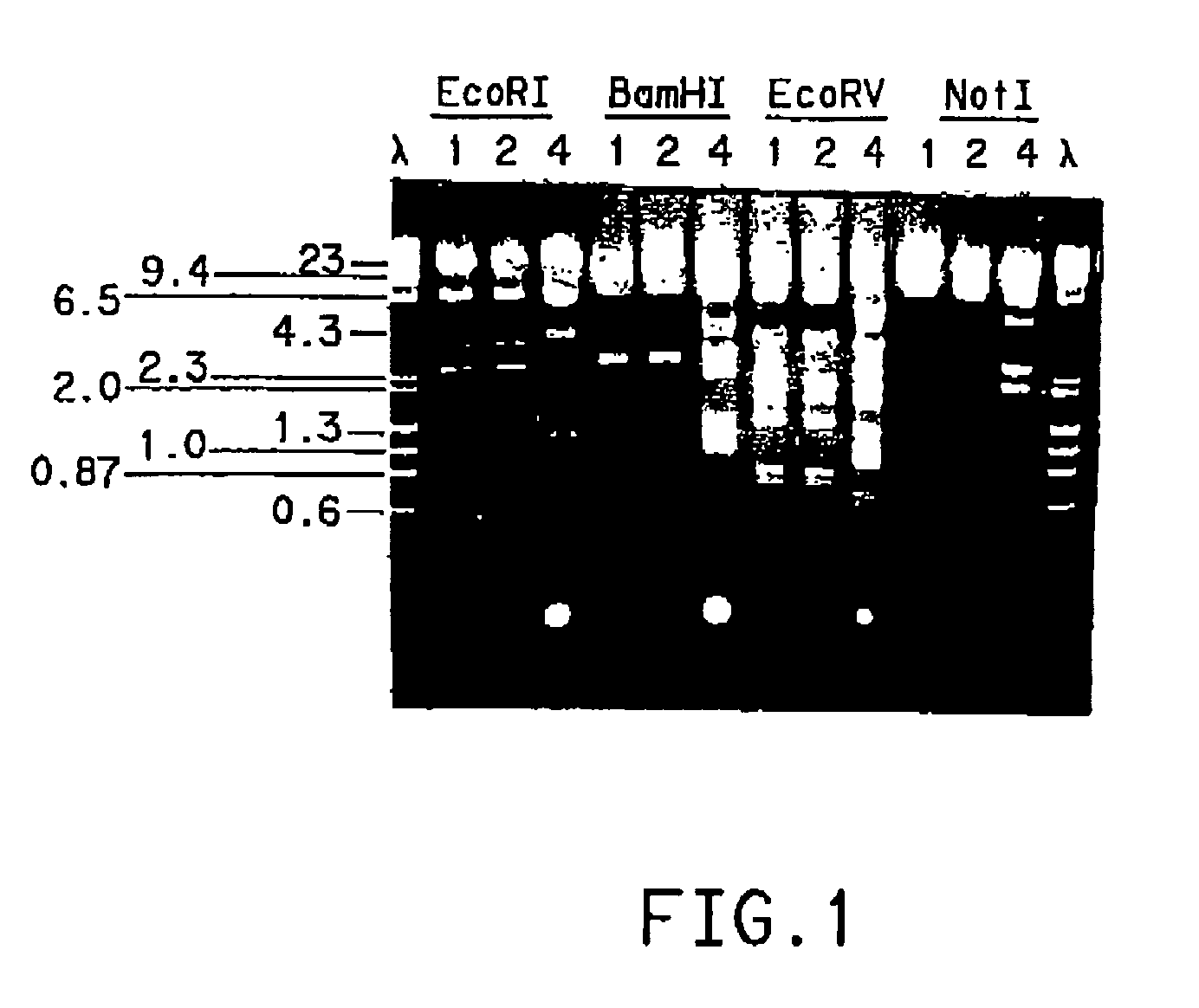Processes for the bioconversion of a fermentable carbon source to 1,3-propanediol by a single microorganism
a technology of fermentable carbon and process, which is applied in the field of process for the bioconversion of a fermentable carbon source to 1, 3propanediol by a single microorganism, can solve the problems of generating waste streams containing environmental pollutants, not being able to demonstrate that the entire process can be accomplished by a single organism, and significant difficulties in such an endeavor
- Summary
- Abstract
- Description
- Claims
- Application Information
AI Technical Summary
Problems solved by technology
Method used
Image
Examples
example 1
Cloning and Transformation of E. coli Host Cells with Cosmid DNA for the Expression of 1.3-propanediol
Media
[0088]Synthetic S12 medium was used in the screening of bacterial transformants for the ability to make 1,3-propanediol. S12 medium contains: 10 mM ammonium sulfate, 50 mM potassium phosphate buffer, pH 7.0, 2 mM MgCl2, 0.7 mM CaCl2, 50 μM MnCl2, 1 μM FeCl3, 1 μM ZnCl, 1.7 μM CuSO4, 2.5 μM CoCl2, 2.4 μM Na2MoO4, and 2 μM thiamine hydrochloride.
[0089]Medium A used for growth and fermentation consisted of: 10 mM ammonium sulfate; 50 mM MOPS / KOH buffer, pH 7.5; 5 mM potassium phosphate buffer, pH 7.5; 2 mM MgCl2; 0.7 mM CaCl2; 50 μM MnCl2; 1 μM FeCl3; 1 μM ZnCl; 1.72 μM CuSO4; 2.53 μM CoCl2; 2.42 μM Na2MoO4; 2 μM thiamine hydrochloride; 0.01% yeast extract; 0.01% casamino acids; 0.8 μg / mL vitamin B12; and 50 amp. Medium A was supplemented with either 0.2% glycerol or 0.2% glycerol plus 0.2% D-glucose as required.
Cells:
[0090]Klebsiella pneumoniae ECL2106 (Ruch et al., J. Bacteriol....
example 2
Conversion of D-glucose to 1,3-propanediol by E. coli Strain AA200, Transformed with Klebsiellia pneumoniae DNA Containing Dehydratase Activity
[0105]Glass serum bottles, filled to capacity with media (ca. 14 mL of Medium A as defined in Example 1 supplemented with 10 μg / mL kanamycin and 0.2% D-glucose, plus or minus 0.5–1.0 mM cyclic adenosine 2′:3′-monophosphate (cAMP)), were innoculated with selected single colony isolates of E. coli strain AA200 containing the K. pneumoniae dha regulon cosmids pKP1 or pKP2, the K. pneumoniae pdu operon pKP4, or the Supercos vector alone. In order to avoid contact with glycerol, the innoculation was performed from either an agar plate of LB-50 amp or from a liquid culture of the same medium. The reactions were incubated for ca. 72 hr at 30° C. while shaking at 250 rpm. Growth was determined by the change in absorbance at 600 nm where the initial OD600 was 0.020 AU. The extent of glucose depletion and product distribution were determined by HPLC. S...
example 3
Conversion of D-glucose to 1,3-propanediol by E. coli Strain DH5α, Transformed with Klebsiellia pneumoniae DNA Containing Dehydratase Activity
[0108]E. coli strain DH5α, containing the K. pneumoniae dha regulon cosmids pKP1 or pKP2, were tested for their ability to convert D-glucose to 1,3-propanediol as described in Example 2. The results are presented in Table 5.
[0109]
TABLE 5Conversion of 0.2% D-glucose to 1,3-propanediolby transformed E. coli strain DH5α:plus (+) and minus (−) cAMP[1,3-propane-TransformantOD600diol] (mM)% Con.% Sel.DH5α-pKP1 (−)0.6300.51002DH5α-pKP1 (+)0.7740.61003DH5α-pKP2 (−)0.5840.61003DH5α-pKP2 (+)0.6990.71003
PUM
| Property | Measurement | Unit |
|---|---|---|
| Molar density | aaaaa | aaaaa |
| Molar density | aaaaa | aaaaa |
| Molar density | aaaaa | aaaaa |
Abstract
Description
Claims
Application Information
 Login to View More
Login to View More - R&D
- Intellectual Property
- Life Sciences
- Materials
- Tech Scout
- Unparalleled Data Quality
- Higher Quality Content
- 60% Fewer Hallucinations
Browse by: Latest US Patents, China's latest patents, Technical Efficacy Thesaurus, Application Domain, Technology Topic, Popular Technical Reports.
© 2025 PatSnap. All rights reserved.Legal|Privacy policy|Modern Slavery Act Transparency Statement|Sitemap|About US| Contact US: help@patsnap.com


